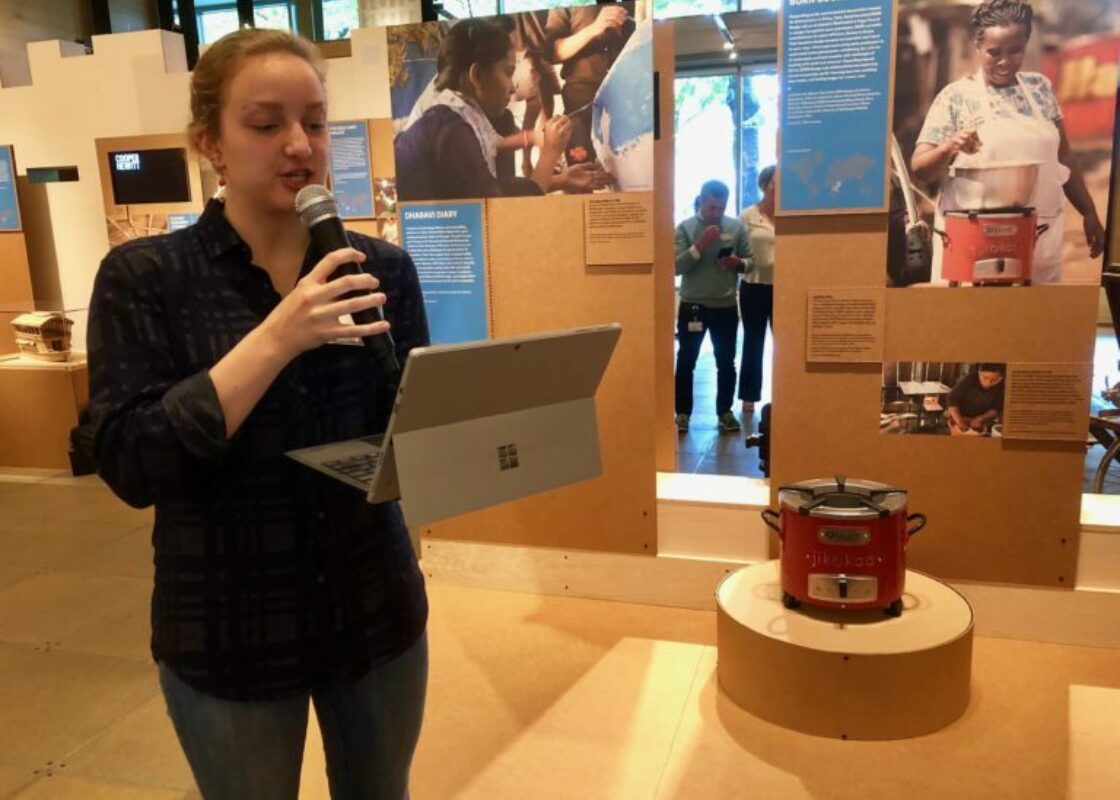BDL Exhibit at Gates Foundation
Gates Foundation exhibit showcases innovative designs for improving lives in the developing world.
In tech-focused Seattle, design might often be thought of as a means to deliver another luxury to consumers who demand an increasing amount of convenience in their daily lives. At the Bill and Melinda Gates Foundation, the focus is often on improving the lives of people in the developing world. So a new exhibit at the organization’s Discovery Center showcases design that does just that.
“Design With the 90%” opened Thursday at the Discovery Center, located across 5th Avenue from Seattle Center. It highlights the efforts of designers from around the world and features more than 25 projects.
The projects offer innovative solutions for a range of needs in medicine, sanitation, reproductive health, communications, education and shelter — and highlight how design can affect social change for millions of people.
Curated by Cynthia Smith of the New York City-based design museum Cooper Hewitt, “Design With the 90%” addresses issues facing some of the world’s poorest communities. Some of the designers were in attendance at a preview event Thursday morning.
“Seattle is a global city that celebrates design and innovation at every level,” said Smith, who first curated a similarly focused event in New York 11 years ago. “And the Discovery Center is a place that asks visitors to arrive curious and leave inspired.”
Suraya Foster was representing Burn Design Lab on Vashon Island, Wash., whose efficient and affordable Burn cookstoves reduce fuel consumption and smoke production for a less toxic cooking environment.
“There are so many basic needs around the world that are not being fulfilled adequately,” Foster said. “It’s really an honor to be among people who are addressing those needs … or addressing a safe way to cook a meal for your family, which everybody should have the right to do.”
Other projects on display included:
Maya Pedal: Human-powered machines made from repurposed bicycles to perform tasks such as shelling corn, grinding coffee, washing clothes or pumping water.
Kio Kit: A collaboration from Seattle-based Teague, which features a rugged case loaded with 40 kid-friendly tablets, headphones, a wireless charging case with 5TB of storage and pre-loaded educational content to transform remote schools into digital classrooms.
Go! Pads: Rwandan banana farmers are empowered to process and sell discarded trunk fiber which is turned into menstrual pads for as low as 6 cents each and provided to women and girls at schools
Bicycle phone charger: Scrap bicycle and radio parts are used to create power off of a spinning bike wheel.
Floating community lifeboats: In flood-ravaged Bangladesh, floating schools, libraries and health clinics serve thousands of people as discarded flatbottom riverboats are modified for new utility. Solar photovoltaic panels charge computers, lights, mobile phones, medical equipment, and solar lanterns.
The entire exhibit featured a series of provocations to get visitors to think more about designing with a purpose, such as “How can design include those who have been excluded?” and “How might design improve how people live?”
For an exhibit focused so heavily on problems and issues which might be affecting populations a world away, “Design With the 90%” does bring some focus back to Seattle, and challenges being faced right in the backyard of the Gates Foundation.
Visitors are asked to participate themselves in a rotating section of the exhibit dedicated to hands-on work and challenges around community, sustainability and housing. “How might we create housing that is affordable to more people?” one challenge asks.
A “local action” section nearby then showcases Seattle projects such as Blokable and Samaritan and further puts the spotlight on Seattle’s homelessness and affordable housing issues.
“Everything we do in the Discovery Center is about engaging people with hands-on and personal activities to do in the Center, and then also perhaps motivate and inspire you to do more once you leave,” said Aleen Adams, the curator of exhibits for the Discovery Center. “It was important to us to have an activity to give visitors a small taste of design … thinking about how we might collaborate together to create a better world.”


